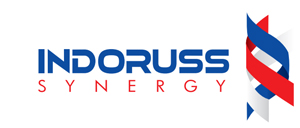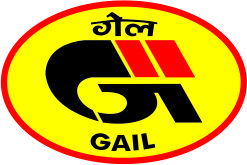Introduction

The Indian gas markets are on the cusp of a fundamental change – upstream policy has been revamped with open acreage being implemented, gas pricing has been freed, a trading hub is under development, a large number of gas distribution areas have been licensed and there is an increased focus on gas pipeline development. Developments in global LNG markets and lower prices will further boost this drive to entirely deregulate Indian gas markets and make them fully competitive. This in turn will have significant impact in increasing the share of gas in the energy mix leading to positive climate and developmental impacts and at the same time provide a great opportunity for bringing international capital to one of the fastest-growing economies in the world. As the Indian economy is set to develop on a healthy growth path, this would increase energy consumption in the country. This increase in energy demand, if met only with present arrangement of traditional fuels, will not only have a fiscal impact but, it also raises serious environmental concerns. As nation's deteriorating air quality has significant contributions from the transportation sector, clean environment initiatives by the Govt. of India have been reinforced by Ministry of Petroleum & Natural Gas (MoPNG) and Ministry of Road Transport & Highway (MoRTH) with an introduction of Liquefied Natural Gas (LNG) as an automotive fuel. This is understood as prime advancement towards empowering nation with a better tomorrow which will certainly contribute towards a reduction in carbon emissions and also generate savings on fuel in the country. This initiative provides for reforms in the industry along with immense opportunities for the transportation sector, especially road, rail, marine, and aviation. Small-scale LNG is altogether the LNG transportation from liquefaction terminal to regasification terminals through tankers, ship, and trucks. The need for small-scale LNG arises from increasing demand for LNG, an increasing number of lesser capacity liquefaction terminals, and simpler storage facilities. These terminals have a maximum capacity of 0.5 MMTPA. For instance, in Singapore, the small-scale LNG terminal has a capacity of only 11 MTPA. By the end of 2017, China had 4 small-scale LNG terminals, which can meet the demand of natural gas for small-scale projects. The advantage of small-scale LNG is adjustable annual delivery contracts and minimum counterparty risks.
The 5th Annual Conference on LNG-The emerging fuel in India is scheduled for 3rd July 2019 in New Delhi, will bring together the whole value chain of LNG professionals, specializing in small-scale projects. The high profile speakers are experts, who have prepared to share tailor-made methods and approaches to ensure the effectiveness of LNG practices, especially when it comes to scaled-down operations. The summit also offers social activities that present the perfect opportunity to network with influencers and exchange ideas. It promises a remarkable knowledge transfer experience with great potential for making business deals. Considering the importance and relevance of the natural gas in the Indian energy mix and the position it holds as a beacon of clean energy for the Indian energy sector, the event attendance will have top executives from various companies in the entire supply chain of Natural Gas.
Supporting Association

Natural Gas Society
The Natural Gas Society (NGS), a registered body, is the emerging voice of the Indian natural gas industry and has been established to catalyse the development of the industry. NGS seeks to establish itself as an industry think tank and provide critical inputs into sectorial policy through research, collaboration and dialogue. It will also work towards the enhancement of India's natural gas industry's competitiveness in global energy markets. NGS will provide a forum for exchange of ideas and best practices for the Indian gas industry, especially in the transmission and distribution segments of the gas value chain.
NGS also supports the optimisation of resources and continual improvement of safety and service aspects of the entire gas chain keeping the interests of all stakeholders in mind, through the promotion of development, application and transfer of new technologies and best practices. It aims to strategically popularise extensive use of natural gas and attract investment into the sector.
Media Partner
LNG One World

LNG OneWorld, a wholly owned subsidiary of Drewry Shipping Consultants, is an established brand within the LNG market place. LNG OneWorld for over a decade has been providing the industry professionals with rich and in-depth coverage on the LNG value chain helping them keep abreast of the trends in the industry. It provides latest news, editorials besides latest trade and shipping data. With strength of over 8,000 registered members across the world, LNG OneWorld contributes to help make better trading and investment decisions. LNG OneWorld’s subscriber base includes oil & gas majors, shipowners, shipyards, terminal operators, traders, risk managers, analysts, and industry leaders. To be a part of the LNG family and actively participate in the live discussion forums on the latest LNG issues all are welcome to register on www.lngoneworld.com
Supporting Partner
Indoruss Synergy Pvt Ltd

INDORUSS SYNERGY PVT LIMITED, New Delhi , as Cooperation associates of JSC RT-Chemcomposite, presents Type 4 composite cylinder based cascades and Modular-mobile Filling Stations (MMFS) for transportation , storage and filling of CNG, HCNG and Bio CNG in India.
Gail India

GAIL (India) Ltd was incorporated in August 1984 as a Central Public Sector Undertaking (PSU) under the Ministry of Petroleum & Natural Gas (MoP&NG). The company was initially given the responsibility of construction, operation & maintenance of the Hazira - Vijaypur -Jagdishpur (HVJ) pipeline Project. It was one of the largest cross-country natural gas pipeline projects in the world. Originally this 1800 Km long pipeline was built at a cost of Rs 1700 Crores and it laid the foundation for development of market for natural Gas in India.
Petronet LNG

Petronet LNG Limited, one of the fastest growing world-class companies in the Indian energy sector, has set up the country's first LNG receiving and regasification terminal at Dahej, Gujarat, and another terminal at Kochi, Kerala. While the Dahej terminal has a nominal capacity of 10 MMTPA [equivalent to 40 MMSCMD of natural gas], the Kochi terminal has a capacity of 5 MMTPA [equivalent to 20 MMSCMD of natural gas].The company is in the process to build a third terminal at Gangavaram, Andhra Pradesh.
Petronet LNG is at the forefront of India's all-out national drive to ensure the country's energy security in the years to come.
Feedback
CONTEXT, PARTICIPANTS, TIMINGS AND SESSION.
Brajesh Singh
Interesting and relevant topic on the discussion.
Navneet Bhatia
Good choice of topics and speakers are crisp in their presentation.
K.K Singh
Very Well organized conference. Relevant Agenda & Speakers.
Manish Vohra
A Knowledgeable panelist, good venue, well organized.
Varun Gogia








